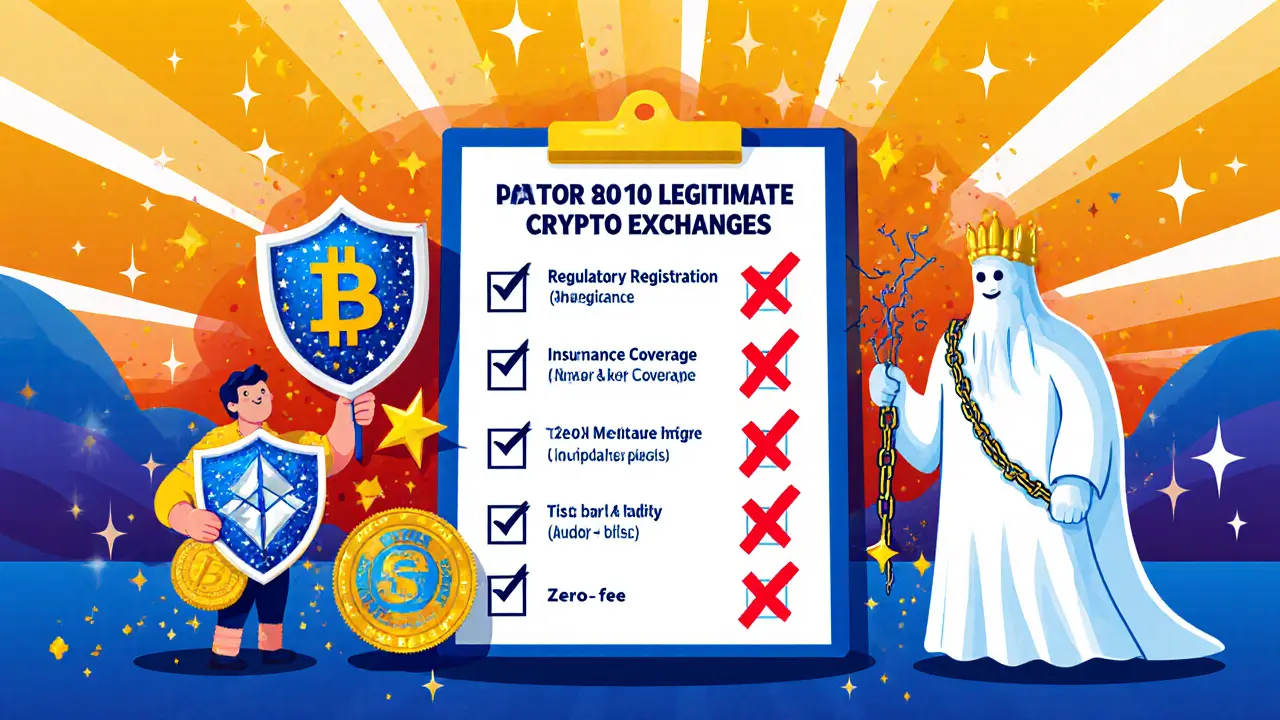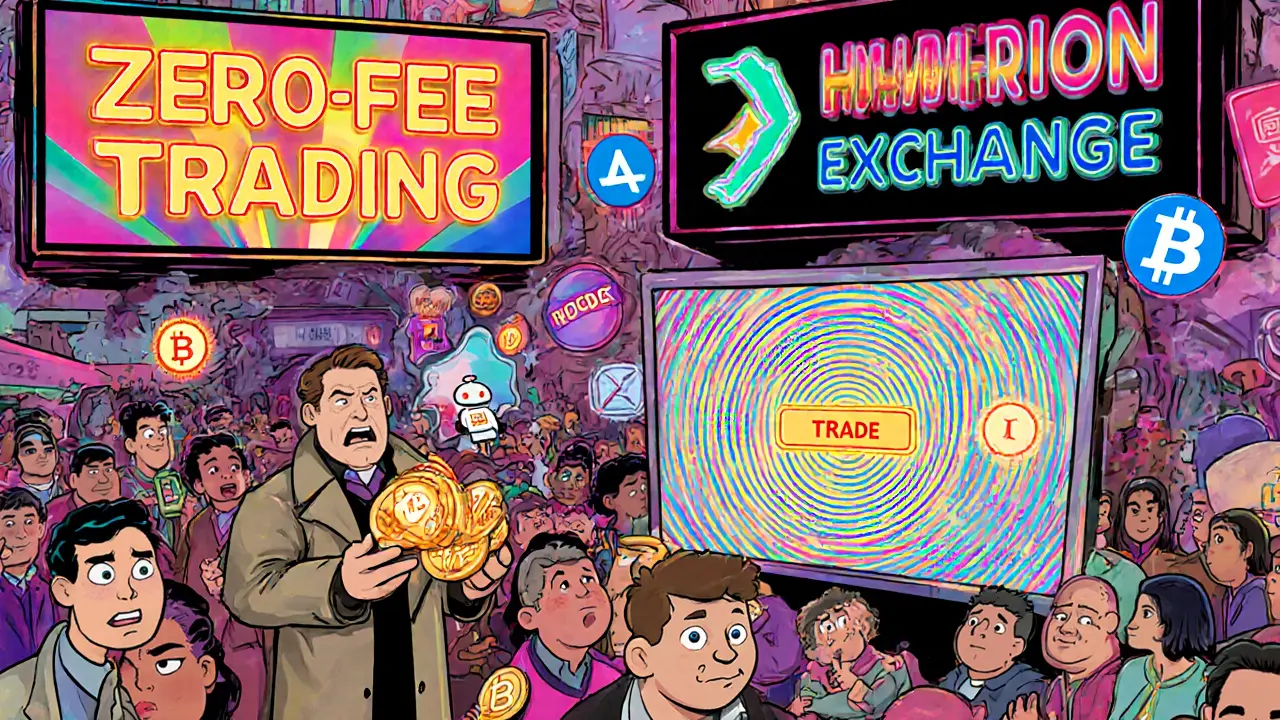Crypto Exchange Verification Tool
Check Exchange Legitimacy
Verify if a crypto exchange meets essential security and regulatory standards
When you Google "Hyperion crypto exchange" you’ll see a mix of ads, forum posts, and vague articles that all seem to promise a new trading platform. The reality? No exchange called Hyperion is listed with any regulator, and the name actually belongs to three unrelated projects that focus on tokens, wallet security, and cybersecurity services. This review separates fact from fiction, explains what each Hyperion project really does, and shows you how to avoid the pitfalls of chasing a phantom exchange.
Why the "Hyperion exchange" myth exists
Reddit, Telegram, and even some paid ads have been buzzing about "Hyperion Exchange" for the past year. A quick scan of the top 20 search results reveals three recurring patterns:
- Mentions of Hyperion Token (HYN) - an ERC‑20 utility token launched in 2020.
- Links to hyperion.fund - a service that offers multi‑signature wallet infrastructure.
- References to Hyperion Networks, a Tennessee‑based cybersecurity provider.
Because all three use the same brand name, users mistakenly believe they belong to a single exchange platform. The confusion is amplified by fake ads that promise zero‑fee trading on "Hyperion" and by the fact that the token’s own wallet UI sometimes displays a "trade" button that actually redirects to external DEXs.
What the real Hyperion projects are
Hyperion Token is an ERC‑20 utility token built on the Ethereum blockchain that powers decentralized mapping services and a limited set of DApps. Launched in 2020, HYN trades on secondary markets like Uniswap and has an average gas fee of $1.27 per transaction as of Q2 2025.
Hyperion.fund is a multi‑signature wallet security platform that provides 2‑of‑3, 3‑of‑5 and custom signing schemes for institutional and high‑net‑worth crypto holders. The service integrates hardware wallets such as Ledger Nano X and Trezor Model T, and stores keys across three geographically separated vaults.
Hyperion Networks is a managed‑service provider specializing in blockchain‑related cybersecurity. Established in Knoxville, Tennessee, it offers penetration testing, threat monitoring, and incident response to enterprises. It does not host any trading engine or order book.
How Hyperion projects differ from actual exchanges
| Feature | Hyperion Token | Hyperion.fund | Hyperion Networks | Binance | Coinbase |
|---|---|---|---|---|---|
| Trading engine | No (token only) | No | No | Yes - 1.4 M TPS | Yes - 250 K TPS |
| Order book | No | No | No | Yes | Yes |
| Liquidity pools | Limited (via DEX) | No | No | Yes | Yes |
| Regulatory registration | None | None (security service) | None (cybersecurity) | Registered in multiple jurisdictions | SEC‑registered broker‑dealer |
| FDIC/Insurance | No | No | No | No (but SAFU fund) | $250 K FDIC insurance per customer |
The table makes it clear: Hyperion‑branded projects provide token utility, wallet security, or cyber‑defense, but none deliver core exchange functions like order matching, liquidity, or regulatory safeguards.

Security highlights of Hyperion.fund
Hyperion.fund’s biggest selling point is its multi‑signature architecture. The platform requires at least two out of three designated key holders to approve any transaction, dramatically reducing the risk of single‑point compromise. In a March 2025 phishing simulation, the protocol prevented a $2.3 million loss by requiring a third‑party signature that the attacker couldn’t supply.
Key security metrics:
- Average setup time: 8-12 hours (requires intermediate key‑management knowledge).
- Recovery process: physical identity verification via KYC portal, taking 72-96 hours.
- Support response: 14.7 hours for security‑related tickets (Q1 2025 data).
- Open‑source GitHub repo: 243 issues, with the most‑upvoted request (#187) asking for a simplified onboarding flow.
Hardware compatibility includes Ledger Nano X, Trezor Model T, and future support for biometric signatures under the upcoming "Guardian Protocol" upgrade slated for Q3 2025.
Risks of mistaking Hyperion for an exchange
Because the brand appears in multiple contexts, users often fall into these traps:
- Sending funds to a non‑existent address. A Reddit user reported losing $350 after trying to deposit to a fake "Hyperion Exchange" wallet created by a scammer.
- Assuming insurance coverage. Unlike Coinbase, Hyperion‑branded services do not offer FDIC or crypto‑insurance, leaving users exposed to total loss if keys are mishandled.
- Regulatory red flags. The SEC’s June 2025 cease‑and‑desist against "CryptoHyperionExchange.com" shows regulators are cracking down on entities that misrepresent themselves as exchanges.
These risks underline why verifying a platform’s licensing status and exchange‑specific features is essential before committing capital.

How to verify a legitimate crypto exchange
If you’re hunting for a place to trade, follow this quick checklist:
- Check the exchange’s registration with the SEC, FCA, MAS, or equivalent regulator.
- Look for transparent fee schedules and clear KYC/AML policies.
- Confirm the presence of an order book, matching engine, and liquidity pools (most exchanges list these on their homepage).
- Search for third‑party audits or security reports (e.g., CipherTrace, CryptoQuant).
- Read community feedback on reputable forums-avoid platforms that generate more confusion than clarity.
Platforms like Binance and Coinbase meet most of these criteria, while Hyperion‑branded projects do not aim to fulfill them.
Bottom line: what should you do with Hyperion?
Treat Hyperion Token as an investment‑grade asset you can hold or trade on DEXs, but never expect built‑in order matching. Use Hyperion.fund if you need a high‑security, multi‑sig wallet for large holdings-just be ready for a technical onboarding process. If you’re looking for everyday trading, stick with regulated exchanges that provide insurance, liquidity, and a clear regulatory footprint.
Is there actually a Hyperion crypto exchange?
No. The name "Hyperion" appears in several unrelated projects-a token, a wallet‑security platform, and a cybersecurity firm-but none operate an exchange.
Can I trade Hyperion Token (HYN) on an exchange?
HYN is listed on decentralized exchanges like Uniswap. It does not have a dedicated order book on centralized platforms.
What security does Hyperion.fund provide?
It offers multi‑signature wallets (2‑of‑3, 3‑of‑5), hardware‑wallet integration, geographically distributed key storage, and a planned biometric signature upgrade.
Should I trust ads that claim "Zero‑fee trading on Hyperion"?
Those ads are scams. Since no exchange exists, any claim of fee‑free trading is misleading and often used to steal deposits.
How do I choose a safe crypto exchange?
Look for regulatory registration, insurance coverage, transparent fee structures, robust security audits, and active community reviews.

Write a comment